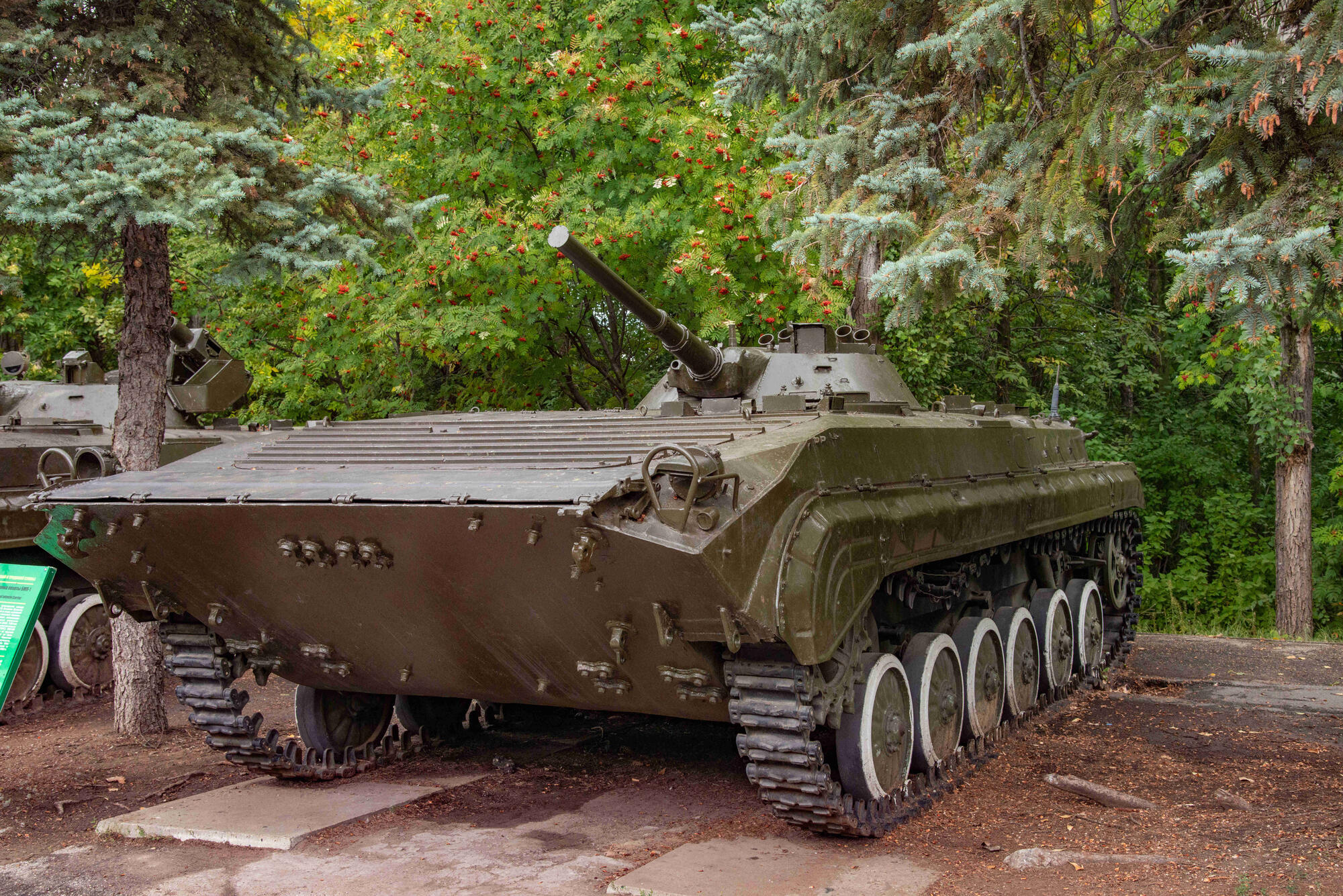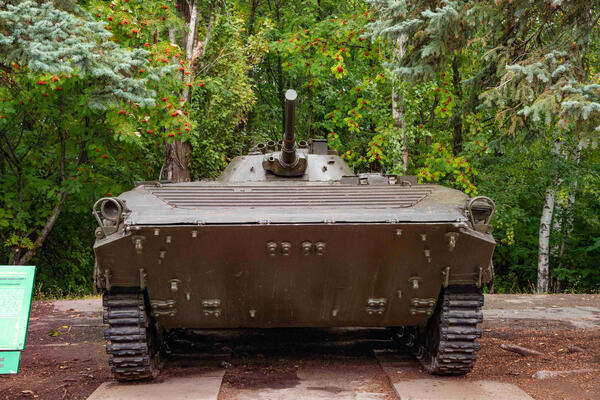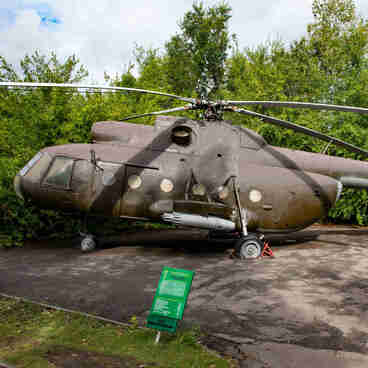The BMP-1 infantry fighting vehicle was developed in the design bureau of the Chelyabinsk Tractor Plant named after V.I. Lenin. The project was led by Pavel Pavlovich Isakov. The vehicle entered service in 1966.
It was the world’s first mass-produced infantry fighting vehicle and the progenitor of this category of armored military carriers. The BMP-1 was a high-speed and highly maneuverable amphibious armored vehicle. The BMP-1 was fitted with a 73mm 2A28 smoothbore gun, a 7.62mm Kalashnikov machine gun, as well as a 9M14 “Malyutka” (“Little one”) anti-tank guided missile. The vehicle’s armor withstood hits from 12.7mm bullets, shell fragments and mines.
The engine compartment of the BMP-1 was located in the front hull on the right. It housed a 300-horsepower UTD-20 multi-fuel six-cylinder V-shaped diesel engine with water cooling, a main clutch, a gearbox with two planetary steering mechanisms, an oil tank with a heating boiler, a cooling system unit with air filtration, fuel system components, a compressor, and a water pump.
The increase in the firepower of the BMP-1 was achieved by equipping it with armored plates with holes for firing ports and vision devices. This allowed the troops to use weapons without leaving the vehicle, on the move and during quick stops.
Eight periscope vision devices with a defrosting system were installed in the troop compartment of the BMP-1. There were firing ports for two light machine guns and six submachine guns in ball mounts, and the soldier at the left side of the rear door could also fire and cover the vehicle from the rear. The firing ports were equipped with fume extractor hoses.
An anti-tank weapon consisting of a guided missile and a launcher was installed on the BMP-1. The launcher consisted of a launch mount, a rail and a 9S428 missile guidance system.
The missile was controlled and aimed at the target by the gunner-operator by transmitting commands from the control panel via wires. There were four such guided projectiles in the vehicle’s armament.
Until 1983, about 20 thousand vehicles of all modifications were produced.
It was the world’s first mass-produced infantry fighting vehicle and the progenitor of this category of armored military carriers. The BMP-1 was a high-speed and highly maneuverable amphibious armored vehicle. The BMP-1 was fitted with a 73mm 2A28 smoothbore gun, a 7.62mm Kalashnikov machine gun, as well as a 9M14 “Malyutka” (“Little one”) anti-tank guided missile. The vehicle’s armor withstood hits from 12.7mm bullets, shell fragments and mines.
The engine compartment of the BMP-1 was located in the front hull on the right. It housed a 300-horsepower UTD-20 multi-fuel six-cylinder V-shaped diesel engine with water cooling, a main clutch, a gearbox with two planetary steering mechanisms, an oil tank with a heating boiler, a cooling system unit with air filtration, fuel system components, a compressor, and a water pump.
The increase in the firepower of the BMP-1 was achieved by equipping it with armored plates with holes for firing ports and vision devices. This allowed the troops to use weapons without leaving the vehicle, on the move and during quick stops.
Eight periscope vision devices with a defrosting system were installed in the troop compartment of the BMP-1. There were firing ports for two light machine guns and six submachine guns in ball mounts, and the soldier at the left side of the rear door could also fire and cover the vehicle from the rear. The firing ports were equipped with fume extractor hoses.
An anti-tank weapon consisting of a guided missile and a launcher was installed on the BMP-1. The launcher consisted of a launch mount, a rail and a 9S428 missile guidance system.
The missile was controlled and aimed at the target by the gunner-operator by transmitting commands from the control panel via wires. There were four such guided projectiles in the vehicle’s armament.
Until 1983, about 20 thousand vehicles of all modifications were produced.




